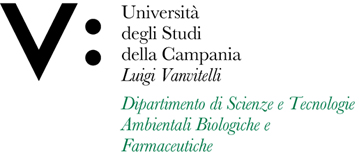Cataldo GODANO
Insegnamento di FISICA TERRESTRE
Corso di laurea in SCIENZE AMBIENTALI
SSD: GEO/10
CFU: 6,00
ORE PER UNITÀ DIDATTICA: 48,00
Periodo di Erogazione: Primo Semestre
Italiano
| Lingua di insegnamento | ITALIANO |
| Contenuti | Il corso tratterà della struttura interna della Terra e dei principali metodi di indagine per conoscerla. Tratterà inoltre del funzionamento dei campi magnetico e gravitazionale, del comportamento reologico delle rocce con particolare attenzione al mantello e dei processi fluidodinamici utili a modellizzare il comportamento dei vulcani. |
| Testi di riferimento | Fowler C. M. R., 2004. The Solid Earth: An Introduction to Global Geophysics, Cambridge University Press. |
| Obiettivi formativi | Gli studenti dovranno dimostrare di conoscere e di aver appreso tutti gli argomenti descritti nel programma. |
| Prerequisiti | Gli studenti dovranno possedere delle conoscenze di Fisica di base (forze, campo, onde) ed essere in grado di comprendere una dimostrazione matematica e seguire un procedimento di soluzione di semplici equazioni differenziali. Le propedeuticità sono Meccanica, Termodinamica, Elettromagnetismo e ottica. |
| Metodologie didattiche | La didattica si baserà essenzialmente su lezione frontali. Non sono previste attività di laboratorio né esercitazioni. |
| Metodi di valutazione | Gli studenti svolgeranno un test multirisposta con 15 quesiti. Per ogni risposta corretta saranno attribuiti 2 punti. Non ci saranno punteggi negati. Per tanto per conseguire la sufficienza dovranno rispondere correttamente ad almeno 9 quesiti, mentre il punteggio massimo sarà raggiunto se si daranno 15 risposte corrette. |
| Programma del corso | Rotazione della Terra |
English
| Teaching language | Italian |
| Contents | The course will deal with the internal structure of the Earth and the main investigation methods to know it. It will also deal with the functioning of magnetic and gravitational fields, the rheological behavior of rocks with particular attention to the mantle and fluid-dynamic processes useful for modeling the behavior of volcanoes |
| Textbook and course materials | Fowler C. M. R., 2004. The Solid Earth: An Introduction to Global Geophysics, Cambridge University Press. |
| Course objectives | Students must demonstrate that they know and have learned all the topics described in the program. |
| Prerequisites | Students must have basic Physics knowledge (forces, field, waves) and be able to understand a mathematical demonstration and follow a process of solving simple differential equations. The prerequisites are Mechanics, Thermodynamics, Electromagnetism and optics. |
| Teaching methods | The teaching will be based essentially on frontal lessons. There are no laboratory activities or exercises. |
| Evaluation methods | Students will take a multi-answer test with 15 questions. For each correct answer 2 points will be awarded. There will be no scores denied. Therefore, to achieve sufficiency, they must correctly answer at least 9 questions, while the maximum score will be reached if 15 correct answers are given. |
| Course Syllabus | Rotation of the Earth |








